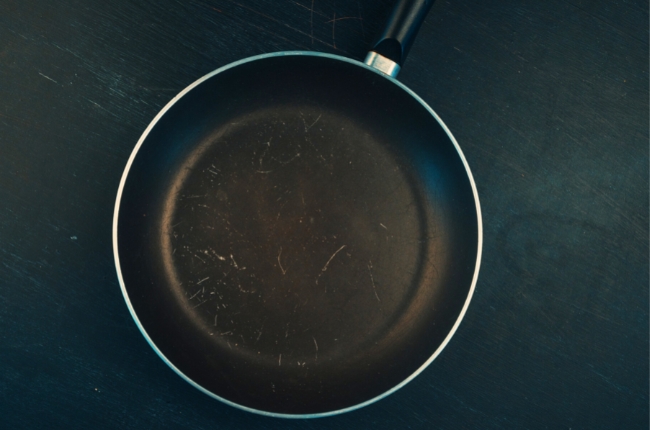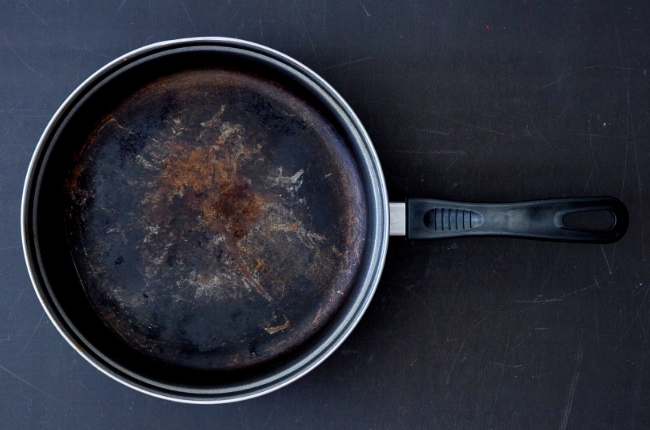Induction cooktops really are a beauty to behold — both in terms of technology and aesthetics.
These modern additions to the home kitchen are loved for their precise and efficient heating. What’s better is that this advanced cooking advantage doesn’t sacrifice looks.
Unlike clunky metal cooktops that often come with more traditional gas ranges or dark metal coils on older versions of electric stoves, induction stoves are sleek all across the board.
However, does this sleek, polished glass look come with its own set of disadvantages? Will you have to baby your cooktop just to maintain its look?
This article takes a deeper look into how fragile induction cooktops really are and how you can keep them looking pristine with a few simple tips.
Does induction cooktop scratch easily?

With the proper precautions, no.
Induction cooktops shouldn’t be so susceptible to scratches.
They are, in fact, made with the best functionality in mind. So, knowing the rough and tumble these stove tops would be put through in the kitchen, they’re typically designed to last.
Why is my induction hob getting scratched?
This doesn’t mean that they’re entirely scratch-proof.
Yes, usually, they’re made with hardened glass, and there are lots of materials out there that are easily capable of scratching the glass.
One such material is a favorite among induction users — cast iron.
It shouldn’t come as a big surprise. They usually have rough bottoms, and sliding them across the surface of an induction cooker with nothing in between to soften the blow will cause some scratches.
Other smaller things might cause scratches (literally smaller!). There are some reports of mystery scratches appearing due to salt or sugar getting rubbed across the surface of induction cooktops.
It isn’t unheard of that even cups or plates with rough ceramic finishes on the bottoms have enough friction to scratch up the surface.
But for the most part, these reports are few and far between. So as long as you’re not sliding rough metal pans willy-nilly on your stovetop, you should be in the clear.
How do I keep scratches off my induction cooktop?

At this point, you already know that induction can take the heat in the kitchen and won’t be scratched by minor accidents. But with that, you also know that induction hobs aren’t invincible.
So, how do I stop scratches on my induction hob? Well, you can take a few precautions to avoid unwanted scratches on your beautiful glass induction cooktop.
Some of these are as simple as being more careful about how you use your pots and pans; others involve cleaning, while some tips suggest barriers you can use to prevent your cookware from scratching the glass.
1. Lift your cookware
The number one culprit behind scratches on glass induction stove tops is the bottoms of your pots and pans.
Picture this: Imagine you have something simmering away in a pot and need to move it to a back burner to make way for a pan you need to cook on at the same time.
It’s a lot easier just to slide it across the surface to the other hob, right?
Don’t feel bad about it! It’s just a simple thing you might do without even thinking about it.
But imagine if you did this every time you had to cook and move pots and pans around. Surely, that’s going to cause some scratches.
So, stay safe and pick up your cookware if you want to move it across the stove. This way, there’s less pressure and drag that will cause a rough surface like the bottom of your pan to scratch your stovetop.
2. Maintain the bottoms of your pots and pans
Aside from making sure you don’t drag your cookware across the stove, it’s also great to look into a bit of maintenance for your cookware.
How so? Just making sure that the bottom of your pots and pans are cleaned regularly is good enough.
Usually, our cookware’s exteriors are the last thing we think of when we start doing the dishes.
However, over time, food residue and grease building up on the bottom of your pots and pans can be abrasive and cause scratches on your glass stove top.
How do you keep an iron skillet from scratching an induction stove?

One major complaint that induction stove users have is that iron, especially cast iron cookware, ends up scratching the glass finish on their stovetops.
Sometimes, those stubborn scratches still appear, no matter how much care you take to lift your pans and transfer them carefully between burners.
This is why a lot of people want to look into different kinds of induction cooktop scratch protectors to protect their stovetops.
These cooktop scratch protectors can vary in material and can even be DIY-ed if you have the right kitchen supplies available.
Should I use a mat on my induction cooktop?
Yes! But only if you find that scratches are a problem you can’t seem to get rid of.
For a lot of induction stove models, cast iron doesn’t really cause scratches at all.
However, if you find that your cookware easily scratches your cooktop, there are mats you can use to shield the surface of your stove from the rough bottom of the cookware.
These mats are usually made of silicone and can be made specifically for induction stoves. However, regular silicone baking mats like Silpat are just as good to use.
Just make sure to check what temperatures they can withstand. As a rule of thumb, it’s better to cook on low to medium heat when using these mats to avoid a mess of melted silicone goo on your stove. But when used with caution, you should be good to go with temperatures up to 475 degrees Fahrenheit.
Can I use parchment paper on an induction cooktop?
Yes!
If you don’t have an induction-specific silicone mat or an old Silpat lying around, don’t fret because there might be something already in your kitchen drawer that can be a DIY induction cooktop mat.
But wait, will paper burn on induction cooktop? Technically, no. Not on the burner itself.
How? Well, induction burners need magnetic metals in order to create heat. There should be no heat transfer when it’s just the burner and the paper.
But it can still burn when used with a pan. As the pan heats up, the paper will, too, which can cause burning and scorching when not used with caution.
Parchment paper is great to use when cooking on low to medium heat.
Just be careful when using it because it can start to scorch and burn at around 470 degrees Fahrenheit. Not too shabby when you compare it to silicone!
Can you use a paper towel on the induction cooktop?
Yes. But only use it when you’re in a pinch.
Just like parchment, it won’t burn on contact with the burner. However, it isn’t made for cooking the way parchment paper is.
So, it will start to scorch at a much lower temperature than you would expect from parchment or silicone.
Can I use other metals on induction cooktop?
No, it might not be a good idea.
One common suggestion on some forums on the internet is the use of other metals that can be smoothed out, such as copper or aluminum, to protect your stove top from scratches.
However, it’s not advisable to use these metals because, again, induction cooking relies on magnetic waves to do the heating. Metals like copper and aluminum can interfere and cause your stove’s heating power to be negatively affected.
Conclusion
At the end of the day, scratches on induction stoves aren’t as big of a problem as they’re made out to be. Usually, you can get away with some heavy-duty cooking with your cooktop unscathed.
When it gets scratched up, they’re usually superficial enough to be fixed by some polishing or everyday kitchen products.
But if you find that your stove is prone to scratches, or if you want to prevent them from happening altogether, you can build up some easy practices that keep your stovetop pristine.
Avoiding friction and sliding rough pots and pans over the surface can be a great starting point!
If you need an extra layer of protection (literally!), you have a range of choices to pick from — from silicone to paper. With these tips and tricks, pretty soon, keeping your induction stove top pristine will all be smooth sailing for you.

Leave a Reply